Hungarian Pál Funk (1894-1974) was under the name of Angelo a leading photographer of European celebrities during the 1920s and 1930s. The glamorous film star portraits of his Angelo Photos studio graced countless European postcards.
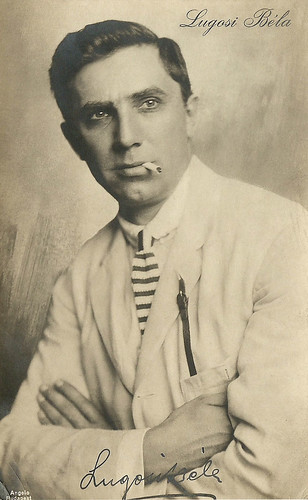
Béla Lugosi. Hungarian postcard. Photo: Angelo, Budapest. Collection: Didier Hanson.
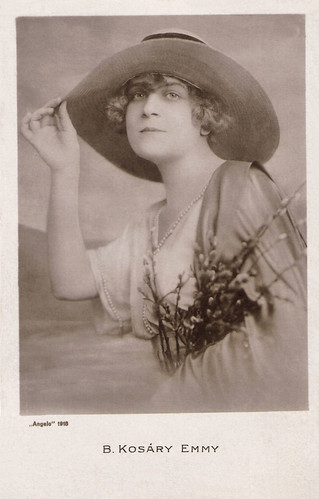
Emmi Kosáry. Hungarian postcard by Kiadja Reinitz Jòzsef, Budapest. Photo: Angelo, 1918.

Oscar Beregi Sr. German postcard by NPG, no. 1275 Photo: Angelo, Budapest, 1918.
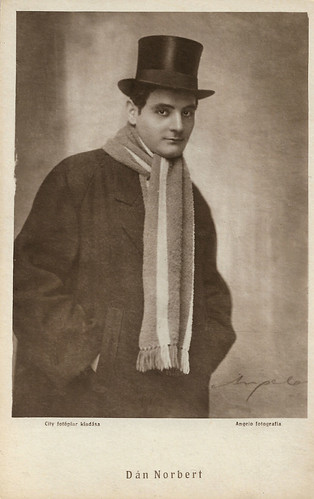
Norbert Dán. Hungarian postcard by City Fotoplar Kladása. Photo: Angelo Fotografia.
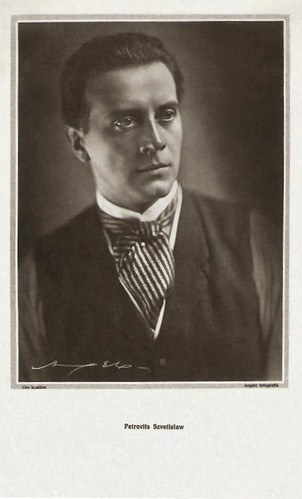
Iván Petrovich. Hungarian postcard by City Kindasa. Photo: Angelo Fotografia.
Pál Funk was born in Budapest, Hungary in 1894. Among the names he used internationally are P. F. Angelo, Angelo Pál, Paul Angelo, Funk Pál, and Funk Pinkász.
In his family history were many famous sculptors, painters and graphic artists. His Italian great-grandfather, Alessandro Angelo was responsible for the stuccos of the Viennese Hofburg in the 18th century.
Between 1902 and 1912, Pál Funk did his primary and secondary studies in Budapest. In 1912 he entered the Academy of Fine Arts in Munich, Germany to study painting with Carl Bauer. There his attention was drawn to the new art form photography and he started to practice a camera.
Between 1912 and 1919 he studied in Berlin with Nicola Perscheid; in Hamburg in the Dührkoop studio of professor Peters; in London with Emil Oho Hoppe and Marcus Adams; and in Paris with Charles Reutlinger.
In Paris, he worked mostly as a fashion designer, but when the First World War broke out he had to return home. He was attracted by the cinema, and worked as an assistant director and cameraman for director Mihaly Kertesz - the future Hollywood director Michael Curtiz.
Funk’s film career would last for a decade. Every year he worked at the European Section of the Franco-British Film Corporation, and on MGM productions. He worked with Rex Ingram, Erich Pommer, Fritz Lang, Alexander Volkoff, and Ernst Lubitsch. In 1927 he would take part in the birth of the first Hungarian talking pictures with István Eiben.
In 1916 he also became first assistant in the studio of photographer Aladár Székely. After many attempts he opened his own more significant photo studio in Budapest in 1919, but the following year he had to flee due to the 'white terror.' The following years he opened photo ateliers across Europe.
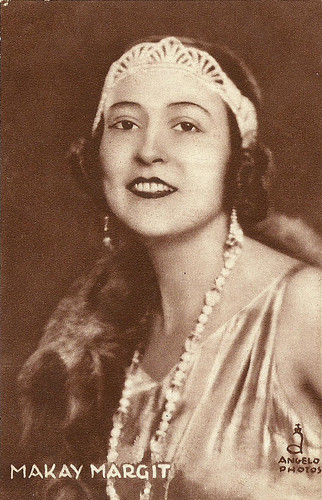
Margit Makay. Hungarian postcard by Globus, Budapest. Photo: Angelo Photos. Collection: Didier Hanson.
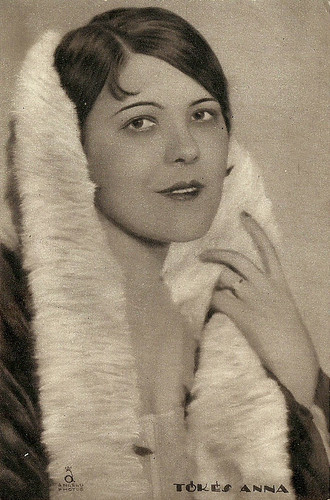
Anna Tõkés. Hungarian postcard by Globus, Budapest. Photo: Angelo Photos. Collection: Didier Hanson.
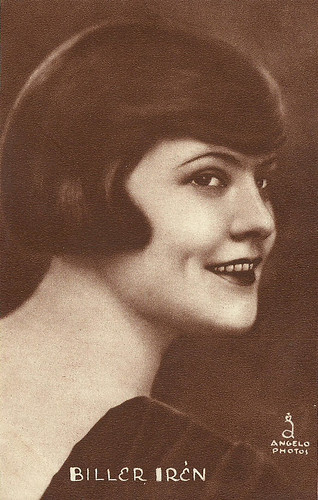
Irén Biller. Hungarian postcard by Globus, Budapest. Photo: Angelo Photos. Collection: Didier Hanson.
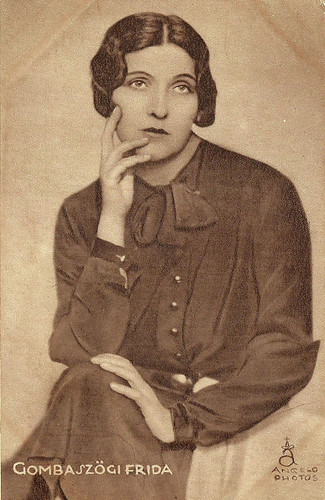
Frida Gombaszögi. Hungarian postcard by Globus, Budapest. Photo: Angelo Photos. Collection: Didier Hanson.
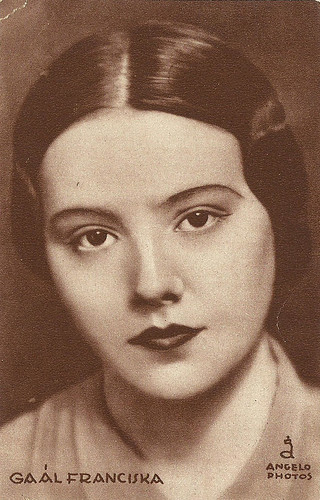
Franciska Gaál. Hungarian postcard by Globus, Budapest. Photo: Angelo Photos. Collection: Didier Hanson.

Rose Barsony. Hungarian postcard by Globus, Budapest. Photo: Angelo Photos.
Between 1920 and 1938, Pál Funk worked in the Netherlands, France and Hungary and he opened ateliers in The Hague, the Dutch sea resort Scheveningen, Paris and Nice, where he photographed celebrities and artists.
From 1923, he took part in international photo exhibitions and won many gold, silver and bronze medals. Respected newspapers and magazines like Vanity Fair, Harper’s Bazaar, and die Berliner Illustrierte Zeitung published his works. In 1926, The Royal Photographic Society of Great-Britain admitted him as one of its members.
Hungary honoured him with the Golden Crown in 1937 as a master of his metier. He returned to Hungary in 1939, where he worked as a teacher, a tireless organiser and creator. During his career, he taught more than fifty Hungarian photographers, who studied under his personal tutelage.
In 1951 his studio was nationalised and until he retired in 1964 Funk worked at the photographers cooperative in Budapest. At the same time he took photographs for himself to suit his artistic ambitions.
He was a founding member of the Association of Hungarian Photographers (1956). In 1958 he got the prize of the Federation Internationale de l’Art Photographique (EFIAP), then in 1969 he got the prize Honoraire Excellence.
Funk retired in 1964. During his fifty-year career as a studio photographer, he photographed over 450,000 people, including many of the major artistic influencers of his time like Gustav Mahler, Pablo Picasso, Charlie Chaplin, Josephine Baker, and Béla Bartók. He has been awarded the French Minister of Art’s award (1961) and the Niepce-Daguerre Medal (1960), among many other major awards.
In 1974, Pál Funk died in Budapest.

Ossi Oswalda. German postcard by Ross Verlag, Berlin, no. 1453/1, 1927-1928. Photo: Angelo Photos.

Iván Petrovich. German postcard by Ross Verlag, Berlin, no. 1454/1, 1927-1928. Photo: Angelo Photos.
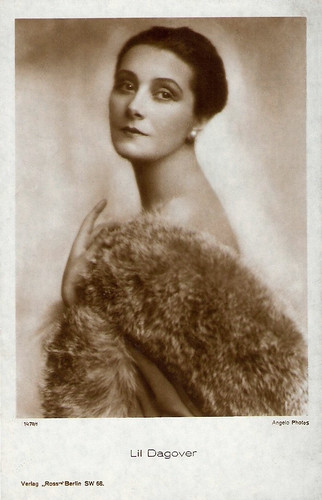
Lil Dagover. German postcard by Ross Verlag, Berlin, no. 1470/1, 1927-1928. Photo: Angelo Photos.
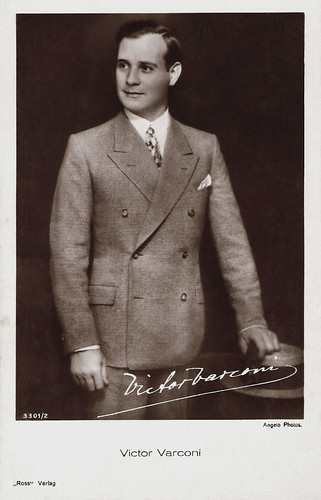
Victor Varconi. German postcard by Ross Verlag, no. 3301/2, 1928-1929. Photo: Angelo Photos.

Willy Fritsch. German postcard by Ross Verlag, no. 4555/1, 1929-1930. Photo: Angelo Photos.

Dita Parlo. German postcard by Ross Verlag, no. 4591/2, 1929-1930. Photo: Angelo Photos.
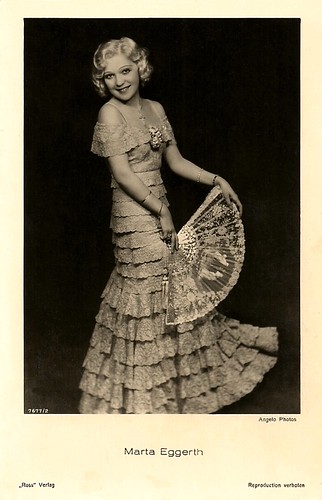
Márta Eggerth. German postcard by Ross Verlag, no. 7677/2, 1932-1933. Photo: Angelo Photos.
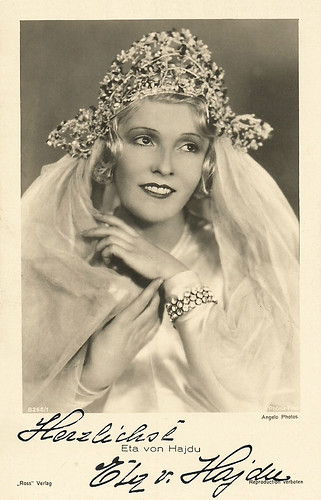
Eta von Hajdu. German postcard by Ross Verlag, no. 8260/1, 1933-1934. Photo: Angelo Photos / Phönix Film. Collection: Didier Hanson.
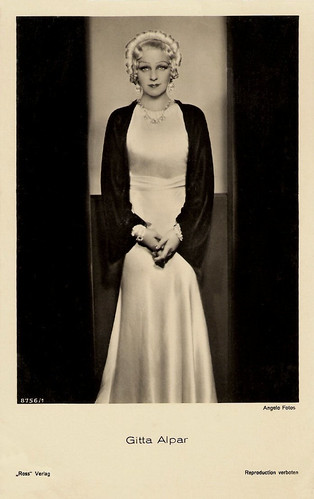
Gitta Alpár. German postcard by Ross Verlag, no. 8756/1, 1933-1934. Photo: Angelo Photos.

Pál Jávor. Hungarian postcard by Rakosi Kiado, Budapest, no. 602. Photo: Angelo.
Sources: Kincses Károly (Fotomuveszet), Wikipedia (Hungarian) and Didier Hanson.

Béla Lugosi. Hungarian postcard. Photo: Angelo, Budapest. Collection: Didier Hanson.

Emmi Kosáry. Hungarian postcard by Kiadja Reinitz Jòzsef, Budapest. Photo: Angelo, 1918.

Oscar Beregi Sr. German postcard by NPG, no. 1275 Photo: Angelo, Budapest, 1918.

Norbert Dán. Hungarian postcard by City Fotoplar Kladása. Photo: Angelo Fotografia.

Iván Petrovich. Hungarian postcard by City Kindasa. Photo: Angelo Fotografia.
The First Hungarian Talking Pictures
Pál Funk was born in Budapest, Hungary in 1894. Among the names he used internationally are P. F. Angelo, Angelo Pál, Paul Angelo, Funk Pál, and Funk Pinkász.
In his family history were many famous sculptors, painters and graphic artists. His Italian great-grandfather, Alessandro Angelo was responsible for the stuccos of the Viennese Hofburg in the 18th century.
Between 1902 and 1912, Pál Funk did his primary and secondary studies in Budapest. In 1912 he entered the Academy of Fine Arts in Munich, Germany to study painting with Carl Bauer. There his attention was drawn to the new art form photography and he started to practice a camera.
Between 1912 and 1919 he studied in Berlin with Nicola Perscheid; in Hamburg in the Dührkoop studio of professor Peters; in London with Emil Oho Hoppe and Marcus Adams; and in Paris with Charles Reutlinger.
In Paris, he worked mostly as a fashion designer, but when the First World War broke out he had to return home. He was attracted by the cinema, and worked as an assistant director and cameraman for director Mihaly Kertesz - the future Hollywood director Michael Curtiz.
Funk’s film career would last for a decade. Every year he worked at the European Section of the Franco-British Film Corporation, and on MGM productions. He worked with Rex Ingram, Erich Pommer, Fritz Lang, Alexander Volkoff, and Ernst Lubitsch. In 1927 he would take part in the birth of the first Hungarian talking pictures with István Eiben.
In 1916 he also became first assistant in the studio of photographer Aladár Székely. After many attempts he opened his own more significant photo studio in Budapest in 1919, but the following year he had to flee due to the 'white terror.' The following years he opened photo ateliers across Europe.

Margit Makay. Hungarian postcard by Globus, Budapest. Photo: Angelo Photos. Collection: Didier Hanson.

Anna Tõkés. Hungarian postcard by Globus, Budapest. Photo: Angelo Photos. Collection: Didier Hanson.

Irén Biller. Hungarian postcard by Globus, Budapest. Photo: Angelo Photos. Collection: Didier Hanson.

Frida Gombaszögi. Hungarian postcard by Globus, Budapest. Photo: Angelo Photos. Collection: Didier Hanson.

Franciska Gaál. Hungarian postcard by Globus, Budapest. Photo: Angelo Photos. Collection: Didier Hanson.

Rose Barsony. Hungarian postcard by Globus, Budapest. Photo: Angelo Photos.
A Master Of His Metier
Between 1920 and 1938, Pál Funk worked in the Netherlands, France and Hungary and he opened ateliers in The Hague, the Dutch sea resort Scheveningen, Paris and Nice, where he photographed celebrities and artists.
From 1923, he took part in international photo exhibitions and won many gold, silver and bronze medals. Respected newspapers and magazines like Vanity Fair, Harper’s Bazaar, and die Berliner Illustrierte Zeitung published his works. In 1926, The Royal Photographic Society of Great-Britain admitted him as one of its members.
Hungary honoured him with the Golden Crown in 1937 as a master of his metier. He returned to Hungary in 1939, where he worked as a teacher, a tireless organiser and creator. During his career, he taught more than fifty Hungarian photographers, who studied under his personal tutelage.
In 1951 his studio was nationalised and until he retired in 1964 Funk worked at the photographers cooperative in Budapest. At the same time he took photographs for himself to suit his artistic ambitions.
He was a founding member of the Association of Hungarian Photographers (1956). In 1958 he got the prize of the Federation Internationale de l’Art Photographique (EFIAP), then in 1969 he got the prize Honoraire Excellence.
Funk retired in 1964. During his fifty-year career as a studio photographer, he photographed over 450,000 people, including many of the major artistic influencers of his time like Gustav Mahler, Pablo Picasso, Charlie Chaplin, Josephine Baker, and Béla Bartók. He has been awarded the French Minister of Art’s award (1961) and the Niepce-Daguerre Medal (1960), among many other major awards.
In 1974, Pál Funk died in Budapest.

Ossi Oswalda. German postcard by Ross Verlag, Berlin, no. 1453/1, 1927-1928. Photo: Angelo Photos.

Iván Petrovich. German postcard by Ross Verlag, Berlin, no. 1454/1, 1927-1928. Photo: Angelo Photos.

Lil Dagover. German postcard by Ross Verlag, Berlin, no. 1470/1, 1927-1928. Photo: Angelo Photos.

Victor Varconi. German postcard by Ross Verlag, no. 3301/2, 1928-1929. Photo: Angelo Photos.

Willy Fritsch. German postcard by Ross Verlag, no. 4555/1, 1929-1930. Photo: Angelo Photos.

Dita Parlo. German postcard by Ross Verlag, no. 4591/2, 1929-1930. Photo: Angelo Photos.

Márta Eggerth. German postcard by Ross Verlag, no. 7677/2, 1932-1933. Photo: Angelo Photos.

Eta von Hajdu. German postcard by Ross Verlag, no. 8260/1, 1933-1934. Photo: Angelo Photos / Phönix Film. Collection: Didier Hanson.

Gitta Alpár. German postcard by Ross Verlag, no. 8756/1, 1933-1934. Photo: Angelo Photos.

Pál Jávor. Hungarian postcard by Rakosi Kiado, Budapest, no. 602. Photo: Angelo.
Sources: Kincses Károly (Fotomuveszet), Wikipedia (Hungarian) and Didier Hanson.
No comments:
Post a Comment